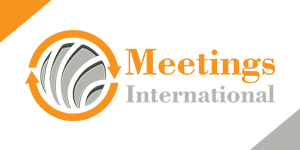Scientfic Sessions:
The main use of biology is to develop various technologies and products for the welfare of human beings and environment is known as Biotechnology. It has various and varied applications in different fields such as Agriculture, Aquaculture, Antibiotics, Therapeutics, Medicines & Diagnostics, Processed Food, Waste Management, Energy Production, Genetically Modified Crops etc. Károly Ereky was a Hungarian agricultural engineer and the term 'biotechnology' was coined by this scientist in 1919. He is considered as the "father of Biotechnology”.
Biosensors are diagnostic devices that can change biological or chemical reactions into detectable and measurable signs. Multiple Researches in the fields and areas of biosensors and bioinstrumentation emphasizes recent trends in biochemistry, electronics, genomics, epigenetics, proteomics, and physiology in order to develop mainly diagnostic, therapeutic, and prosthetic devices.
Bioengineering is a discipline of Biotechnology that applies the engineering principles of design and analysis to biological systems and biomedical technologies. Some Examples of bioengineering research consists bacteria engineered to produce various chemicals, latest medical imaging technology, portable disease diagnostic devices, and tissue engineered organs.
Environmental biotechnology is a sub branch of biotechnology that mainly focuses and addresses on environmental problems, such as detection and removal of different types of pollution into environment, generation of renewable energy or biomass production, by exploiting the biological processes. Environmental biotechnology involves a broad range of applications such as bioremediation, prevention, detection and monitoring, genetic engineering for sustainable environmental development and healthy quality of living and to balance the nature.
Microbial biotechnology is a part of biotechnology that involves the use of microorganisms and their related products. Most of the times, Microbial biotechnology is also referred to as industrial microbiology which is an antique field that has been given new dimensions because of the innovations made in the field of genetic engineering in vitro manipulation of DNA molecules to generate new combinations of genes or sequences, to place the gene under the control of varied regulatory systems, to introduce a specific mutation in a molecule etc.
Synthetic Biology is a branch of science that encompasses a broad range of methodologies from various disciplines, such as biotechnology, genetic engineering, molecular biology, molecular engineering, systems biology, membrane science, biophysics, chemical and biological engineering, electrical and computer engineering, control engineering and evolutionary biology. Synthetic biology is on its way to treat the human health. Some bacteria conspire against us to cause severe illness; others live harmlessly inside us, even playing crucial roles in maintaining our health.
Systems biology is the study of the interactions and behavior of the components of biological entities, including molecules, cells, organs, and organisms. Examples include the lactose- and galactose utilization systems in certain bacteria, such as Escherichia coli and Streptococcus. The ability for design predictive, multistate models enables our scientists to invent the latest biomarkers for disease, stratify patients based on unique profiles of genetics, and target drugs and other treatments. Systems biology, finally, creates the potential for overall new kinds of exploration, and drives constant innovation in biology-based technology and computation.
DNA synthesis is the process of natural or artificial creation of deoxyribonucleic acid (DNA) molecules. DNA is a macromolecule made up of nucleotide units, which are linked by covalent bonds and hydrogen bonds, in a repeating structure. DNA synthesis occurs in all eukaryotes and prokaryotes, as well as some of the viruses. The discovery of the double-helical nature of DNA by Watson & Crick clearly explained how genetic information can be duplicated and passed on to upcoming generations. The strands of the double helix can separate and serve as templates for the synthesis of daughter strands.
Gene therapy is the introduction of genes into existing cells to prevent or cure a wide range of diseases. For example, suppose a brain tumor is forming by rapidly dividing cancer cells. The reason this tumor is forming is due to some defective or mutated gene. A gene that is inserted directly into a cell usually does not function. Instead, a carrier also known a vector is genetically engineered for delivering the gene. Some viruses often used as vectors because they can deliver the new gene by infecting the cell. The viruses are modified so they can't cause diseases and health problems. Some types of virus, such as retroviruses, integrate their genetic material (including the new gene) into a chromosome in the human cell.
tem cell technology is a rapidly growing field that combines the efforts of cell biologists, geneticists, and clinicians and offers hope of effective treatment for a variety of malignant and non-malignant diseases. In stem cell transplantation, stem cells replace cells damaged by chemotherapy or disease or serve as a way for the donor's immune system to fight some types of cancer and blood-related diseases, such as leukemia, lymphoma, neuroblastoma and multiple myeloma. These transplants use adult stem cells or umbilical cord blood.

